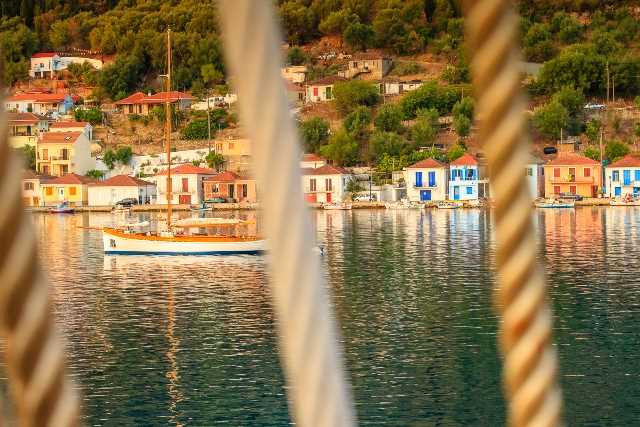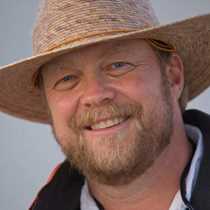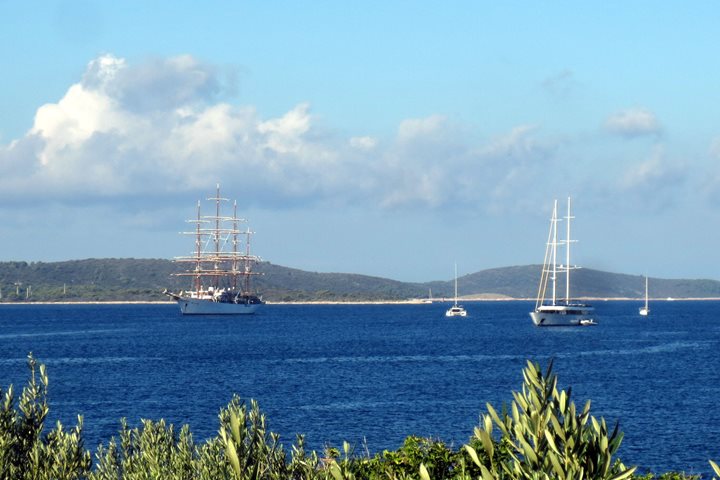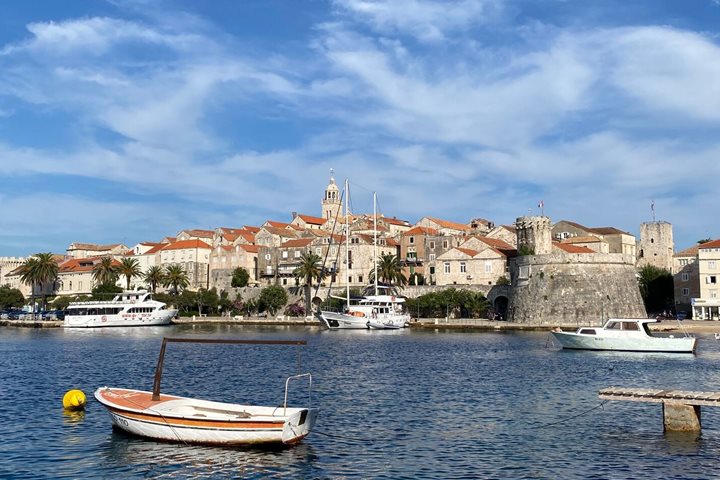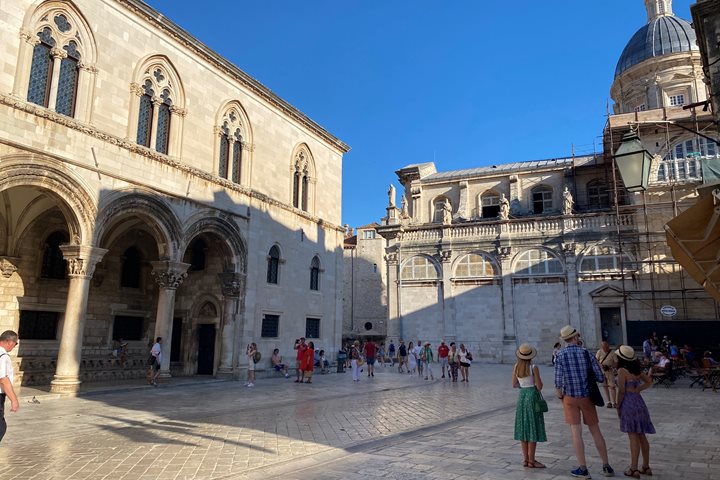Sea Cloud arrived in Ithaca, the second smallest island in the Ionian Sea and home to Odysseus, in the early morning, on a clear and warm day. We tendered ashore where the statue of Odysseus was waiting to welcome us! Ithaca is small and rugged, but still one of the best-kept secrets of our islands, and a place with a long maritime tradition. Vathy, the main port and capital, is a nice small quiet town hiding in one of the most concealed and protected natural bays of Greece, in the old days hiding from the pirates, but nowadays only from the strong winds. It’s a tiny port, but many sailboats prefer it and come to enjoy the sweetness of the land and the legends associated to the cunning king Odysseus, the “man of many devices.”
We drove with our buses in the windy roads of the northern part of Ithaca and mountain Neritos. The landscape was green, full of low vegetation but also pines, olives, and cypress. We drove past the beach where Odysseus landed after 20 years away from home, fighting in Troy for ten years,and then wandering in the seas–and the arms of various women–for another ten, and we made it up to the Monastery of Kathara, founded in 1696. The view from the elevation of 1,800 ft. down to the south and the bay of Vathy was spectacular! Lord Byron had also visited the precincts, but there was very little from the original buildings after the disastrous earthquake of 1953. However, we did see the miraculous icon of the birth of the Virgin Mary in the main church that was loaded with votive offerings in the form of jewelry or silver and bronze plates with representations of objects, body parts, or people for whom the dedications were made, chandeliers, candleholders, or small silver ships hanging all over the ceiling.
Our picturesque drive continued through the village of Anogi. A few minutes laterwe reached Stavros, the second largest town on the island with 250 inhabitants. We stopped in the central plateia, i.e. square with the main church, the Greek kafeneia (cafes), a map of Odysseus’ journey, and a bust of the man himself! Stavros is very close to the ruins of what some archaeologists believe are the ruins of Odysseus’ Palace, in other words, a Mycenaean 13th century BCE palace complex, and possibly the very home to which Odysseus strived to return, while his faithful wife Penelope with her son Telemachus were trying to keep the suitors away from the throne!
After enjoying our Greek coffees, local sweets (ravani, baklava, and kantaifi), and juices, we drove back to Vathy, always following the road on the steep slopes of the mountain and enjoying spectacular views to the neighboring island of Cephalonia, the island of Captain Corelli’s Mandolin.

